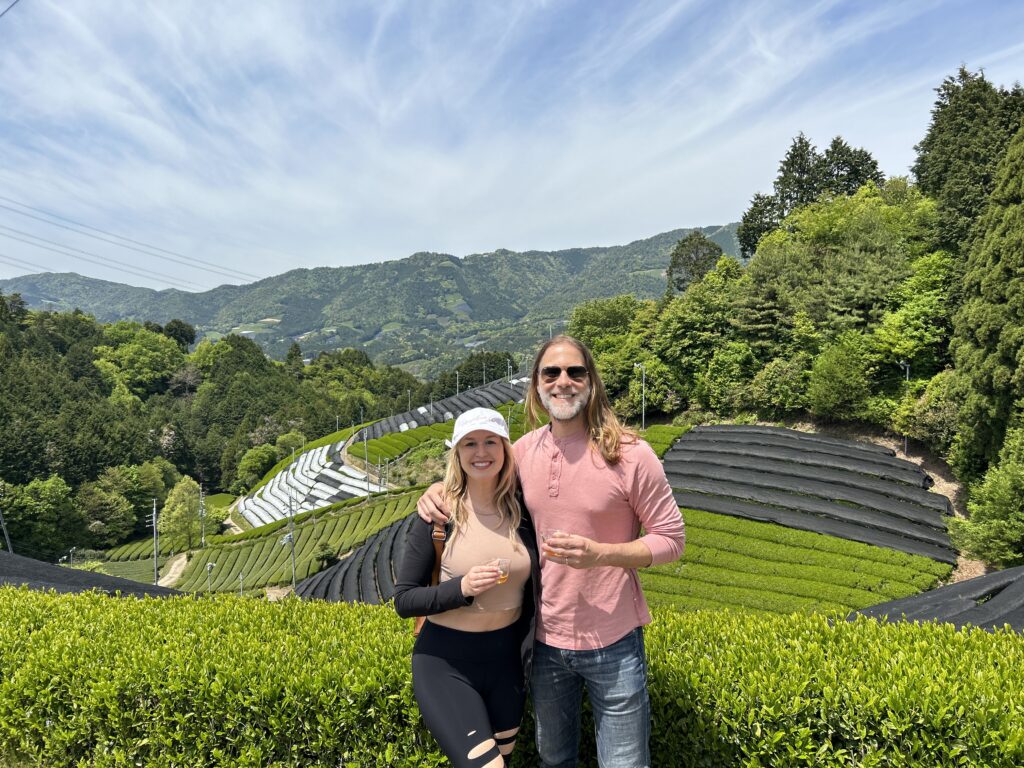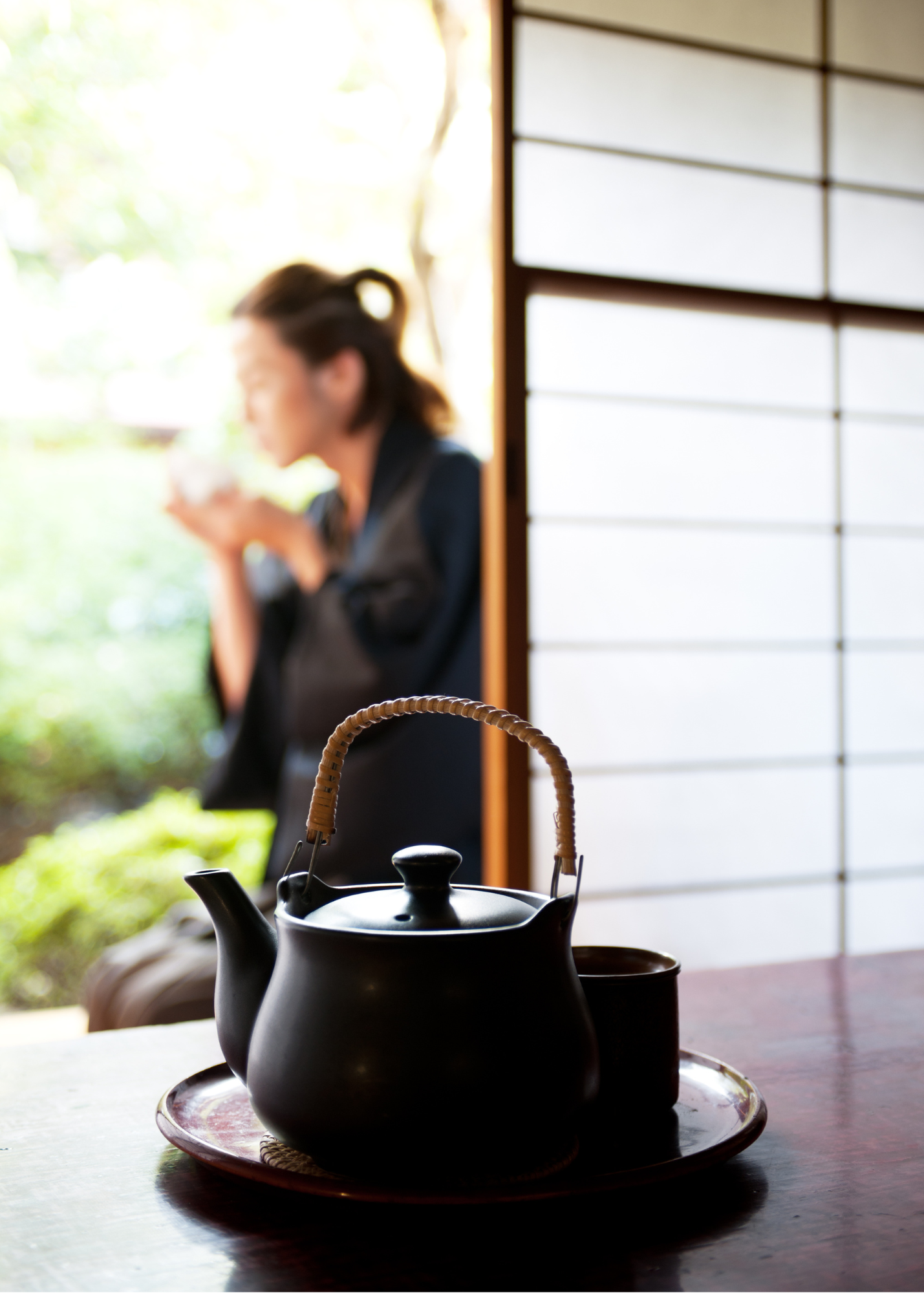History of Mindfulness in Japan
When I think of Japan, I think of many things: sushi, anime, samurai, technology, and of course, mindfulness. Japan has a long and rich history of practicing mindfulness, which is evident in many aspects of their culture. In Japan, mindfulness is not just a trendy buzzword, it’s a way of life. In this blog post, I’ll explore some of the ways in which mindfulness is woven into the fabric of Japanese society.
Tea Ceremony
One of the most iconic examples of mindfulness in Japanese culture is the tea ceremony. This centuries-old tradition is more than just a way to enjoy tea; it’s a form of meditation. Each movement and gesture is deliberate and purposeful, requiring the participant to be fully present in the moment. Watching a master tea ceremony performer in action is like watching a work of art being created before your eyes. It’s easy to get lost in the tranquility of the moment.

Being in Japan, Jared and I were psyched to spend 4+ hours on a tea tour in Wasuka, the region in the Kyoto prefecture known for premium Japanese tea. Lead by Hiro & Gaëlle from the Obubu Tea Farm, we found ourselves sampling over 10 different varieties of tea (from everyday houjicha and genmaicha to premium sencha and matcha). But the best part was visiting their beautiful tea fields in the surrounding mountains to learn about tea farming. It’s incredible to understand the care the farmers take to prepare and shelter the tea plants to optimize their yield. I loved green tea before, but this experience offered me to a whole new level of appreciation for my morning beverage. Furthermore, with every tea I’ve drank since, I’ve enjoyed each sip with full presence and attention, contemplating who were the people, elements, and other factors that brought it to my cup.
Focus on ‘The Gap’
Another example of mindfulness in Japanese culture is the concept of “ma,” which means “space” or “gap.” Ma refers to the idea of creating space in one’s life, both physically and mentally. For example, in Japanese architecture, there is often a deliberate use of empty space to create a sense of calm and tranquility. Similarly, in Japanese music, there is a concept of “ma” that refers to the pauses between notes. This creates a sense of rhythm and harmony that is pleasing to the ear.
And in it’s core essence, this is how meditation works. You see, every thought has a beginning, a middle, and an end. When you meditate, you’ll notice that there is a space between the end of one thought and the beginning of the next. This is known as the Gap. With a consistent meditation practice, I’ve been able to extend the space between two concurrent thoughts. By creating space in our lives, we can cultivate a sense of mindfulness and be more present in the moment.
Corporate Mindfulness
In addition to the tea ceremony, mindfulness is also evident in the Japanese approach to work. Japanese employees are known for their diligence and attention to detail, which is a reflection of their mindfulness. For example, in Japanese manufacturing plants, workers are encouraged to practice “kaizen,” which means continuous improvement. This involves paying close attention to every step of the manufacturing process and making small improvements over time. This mindset has led to many breakthroughs in technology, from the development of the bullet train to the creation of advanced robots. By approaching technology with mindfulness and a commitment to excellence, Japan has become a leader in the tech industry.
Zen Meditation
One of the most well-known examples of mindfulness in Japan is the practice of Zen meditation. Zen is a form of Buddhism that emphasizes meditation as a means of achieving enlightenment. Zen meditation involves sitting in silence and focusing on one’s breath, with the goal of quieting the mind and achieving a state of deep relaxation. For those of you just starting a meditation practice, then you know it’s not as easy as it sounds. It takes a lot of practice to quiet the mind and just be in the present moment, and this is precisely why we offer meditation coaching support for businesses and individuals who long to reap the benefits of meditation.
How we can support your daily mindfulness practice
Mindfulness is deeply ingrained in Japanese culture and is evident in many aspects of their society, from Zen meditation to the tea ceremony to the approach to work. By practicing mindfulness, the Japanese have cultivated a sense of presence and awareness that is reflected in their art, architecture, and way of life. As someone who has struggled with mindfulness in the past, I find this approach to be inspiring and have dedicated my life to sharing mindful awareness practices with others. Maybe one day, I’ll even master the art of Zen meditation. But for now, I’ll stick to drinking tea and enjoying the quiet moments of life.
being better offers personalized coaching for executives and individuals to support personal growth in the realm of self awareness and personal fulfillment through a personal mediation practice.
